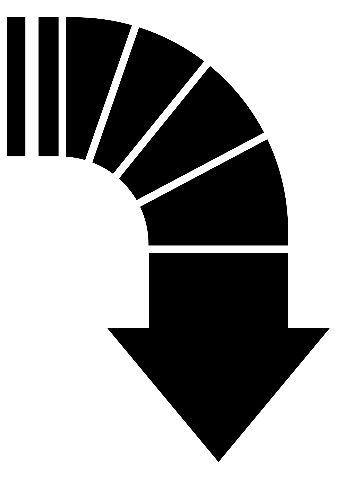Troubleshooting Common Trolling Motor Problems

In the world of marine electronics, a trolling motor is a vital component of any angler’s setup. When it fails to deliver, it can be a frustrating experience for even the most seasoned fisherman.
A dead trolling motor can quickly turn a fun day on the water into a frustrating experience.
In this guide, we’ll help you diagnose and fix common issues that arise with trolling motors.
Dead Trolling Motor? Understanding the Most Common Causes of Failure
When a trolling motor fails to start or malfunction, it’s essential to identify the root cause of the problem. Common causes of failure include electrical issues, mechanical problems, or software glitches. The process of **Identifying the Source is crucial in determining the root cause of issues with a marine propulsion system, requiring a thorough diagnosis of the motor, electronics, and repair methods to ensure proper malfunction troubleshooting.
Troubleshooting Common Trolling Motor Problems
When you’re stuck on the dock, struggling to diagnose issues with your boat’s trolling motor, it’s easy to get frustrated. To get back on the water quickly, a solid understanding of the maintenance process is vital.
The first step in maintenance is to identify the most critical components and assess their conditions.
This involves an initial inspection of the wiring, connections, and motor housing to identify any signs of wear or damage.
Basic electrical checks are also essential, as they can reveal voltage and amperage issues that may be causing problems. Continuity checks and circuit analysis can help identify any breaks in the wiring or shorts in the system.
Brushed and brushless motors differ significantly in their design and function, making it essential to understand these differences when inspecting issues. Brushless motors, for instance, are more prone to.

What Are the Most Common Issues
Electric boat motors have revolutionized the way we navigate the waters, offering a seamless and efficient way to explore the great outdoors. Even with advanced stabilization systems and waterproof coatings, electric boat motors require proper maintenance and handling to prevent common issues from arising.
Whether you’re a seasoned boat owner or a newcomer to the world of electric propulsion, it’s essential to be aware of the most frequently encountered problems that can arise, as these can quickly put a damper on your navigation and enjoyment.
| Frequently Encountered Problems |
• Electrical system malfunctions • Gearbox issues • Propeller problems • Battery drain • Controller failures |
||
| circuit-related Issues | including issues with propeller speed, reduced efficiency, navigation system malfunctions, loss of control, and stabilization problems, which can be exacerbated by waterproof coating corrosion and degradation. |
| Common Issues with Trolling Motors | Causes | Signs of Wear and Tear | Repair and Maintenance |
|---|---|---|---|
| Unusual Noises | Corrosion, Worn-out Components, Malfunctioning Electrical Connections | Cracks, Rust, Loose Connections | Visual Inspection, Replacement of Worn-out Parts |
| Malfunctioning Electrical Connections | Loose Connections, Corrosion, Damage | Burning Smell, Flickering Lights | Tightening Loose Connections, Replacing Damaged Parts |
| Corrosion | Humidity, Saltwater, Lack of Maintenance | Rust, Corrosion, Discoloration | Cleaning, Rust Removal, Protective Coating |
Efficient Navigation and Trolling Motor Speed Control
For many anglers, the thrill of hitting the open water is a cherished ritual, demanding a blend of artistry and technical precision. With the right techniques, including efficient navigation and trolling motor speed control, you can transform a mediocre day into a memorable adventure.
Understanding Motor Speed Control.
Motor speed control is a crucial aspect of boat ownership, and it’s vital to comprehend the various types of systems and their characteristics.
Fixed speed control systems, for example, maintain a consistent speed throughout, while variable speed control systems allow for adjustments on the fly.
This nuanced approach can significantly impact boat performance, fuel efficiency, and overall fishing experience.
Troubleshooting Common Issues.
When diagnosing motor speed control problems, it’s essential to identify the root cause of the issue. The company places a high value on common, hands-on adventure, from fixing broken equipment to taking ownership of new projects, all under the management of experienced professionals who prioritize care, upkeep, renovation, restoration, and upgrade to ensure a smooth operation.
Waterproofing and Corrosion Protection Techniques for Trolling Motor Housing and Propeller
When it comes to crafting a winning combination of performance and durability, it’s crucial to anchor your electric boat motor with a solid foundation. By establishing a strong bond between the trolling motor housing and propeller, you can ensure a seamless operation that withstands the harsh realities of the marine environment.
Proper design of the trolling motor housing and propeller is essential in preventing corrosion and damage.
For instance, the use of stainless steel or aluminum alloys can significantly reduce the risk of corrosion.
This design consideration is critical in assembling a reliable and efficient electric boat motor.
In operation, a well-designed trolling motor housing and propeller can withstand the harsh marine environment and ensure optimal performance.
Regular inspections and cleaning are necessary to maintain the integrity of the components. This includes checking for signs of wear and tear, corrosion, and damage. Common mistakes to avoid include inadequate design, construction, building, manufacturing, producing, assembly, installation, and operation.
Supporting Facts for Electric Boat Motor
- Proper design of the trolling motor housing and propeller can significantly reduce the risk of corrosion.
- The use of stainless steel or aluminum alloys can withstand the harsh marine environment.
- Regular inspections and cleaning are necessary to maintain the integrity of the components.
- Inadequate design, construction, building, manufacturing, producing, assembly, installation, and operation can lead to common mistakes.
How to Extend Battery Life for Trolling Motors
How to Use a Trolling Motor in Weedy Areas


